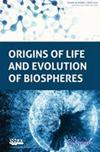跳舞为Uwí -仪式和本体论在移动
IF 1.2
4区 物理与天体物理
Q2 BIOLOGY
引用次数: 1
摘要
为Uwí(桃棕,Bactris gasipaes)跳舞,是厄瓜多尔亚马逊地区Shuar人庆祝的日历仪式,主要是万物有灵论本体论的一部分,在过去的一个世纪中,随着历史、政治和文化背景的变化,舞蹈被反复重新定义。与Uwí相关的权力场是广泛的,包括生命和死亡:一方面,Uwí站在生命、成长、生育和丰富的仪式化的中心;另一方面,他体现了破坏性代理,这与战争及其各种仪式框架有关。同时,Uwí代表了Shuar生活理论的一个重要维度,也是他们权力理论中的一个人物,与欢乐和美好生活密切相关。在20世纪60年代和70年代,Uwí被跨文化天主教礼拜仪式采用和改编,并在此背景下获得了新的仪式元素和新的意义。近年来,在经历了从1970年代到新千年之间的巨大表演差距之后,Uwí和他的庆祝活动已经与土著表演融合在一起,成为厄瓜多尔跨文化政治的一部分。在这个框架中,泛灵论本体论的表现与本土政治中的文化转向相互关联。这篇文章探讨了几个关于本体论轨迹的问题,以及仪式和文化表演与历史发展和政治问题的关系。本文章由计算机程序翻译,如有差异,请以英文原文为准。
Dancing for Uwí – Rituals and Ontologies on the Move
Dancing for Uwí (peach palm, Bactris gasipaes), a calendric ritual celebrated by the Shuar in the Ecuadorian Amazon region, forms part of a mainly animistic ontology, and has been reframed repeatedly during the past century in interaction with shifting historical, political and cultural contexts. The power field associated with Uwí is extensive, and encompasses life and death: on the one hand, Uwí stands at the centre of the ritualization of life, growth, procreativity and abundance; on the other hand, he embodies destructive agency, which has been linked with warfare and its diverse ritual frames. Uwí represents, at the same time, a significant dimension of a Shuar theory of life, as well as a figure within their theory of power, and is closely connected to conviviality and the good life. During the 1960s and 1970s Uwí was adopted and adapted by intercultural Catholic liturgy, and has acquired new ritual elements and new meanings in this context. In recent years, after large gaps between performances from the 1970s to the new millennium, Uwí and his celebration has been merged with the performance of indigeneity as part of intercultural politics in Ecuador. In this framework, the performance of an animistic ontology has been interconnected with the cultural turn in indigenous politics. This contribution explores several questions concerning ontological trajectories, as well as the relationship of ritual and cultural performances to historical developments and political issues.
求助全文
通过发布文献求助,成功后即可免费获取论文全文。
去求助
来源期刊
CiteScore
3.20
自引率
15.00%
发文量
12
审稿时长
>12 weeks
期刊介绍:
The subject of the origin and early evolution of life is an inseparable part of the general discipline of Astrobiology. The journal Origins of Life and Evolution of Biospheres places special importance on the interconnection as well as the interdisciplinary nature of these fields, as is reflected in its subject coverage. While any scientific study which contributes to our understanding of the origins, evolution and distribution of life in the Universe is suitable for inclusion in the journal, some examples of important areas of interest are: prebiotic chemistry and the nature of Earth''s early environment, self-replicating and self-organizing systems, the theory of the RNA world and of other possible precursor systems, and the problem of the origin of the genetic code. Early evolution of life - as revealed by such techniques as the elucidation of biochemical pathways, molecular phylogeny, the study of Precambrian sediments and fossils and of major innovations in microbial evolution - forms a second focus. As a larger and more general context for these areas, Astrobiology refers to the origin and evolution of life in a cosmic setting, and includes interstellar chemistry, planetary atmospheres and habitable zones, the organic chemistry of comets, meteorites, asteroids and other small bodies, biological adaptation to extreme environments, life detection and related areas. Experimental papers, theoretical articles and authorative literature reviews are all appropriate forms for submission to the journal. In the coming years, Astrobiology will play an even greater role in defining the journal''s coverage and keeping Origins of Life and Evolution of Biospheres well-placed in this growing interdisciplinary field.

 求助内容:
求助内容: 应助结果提醒方式:
应助结果提醒方式:


